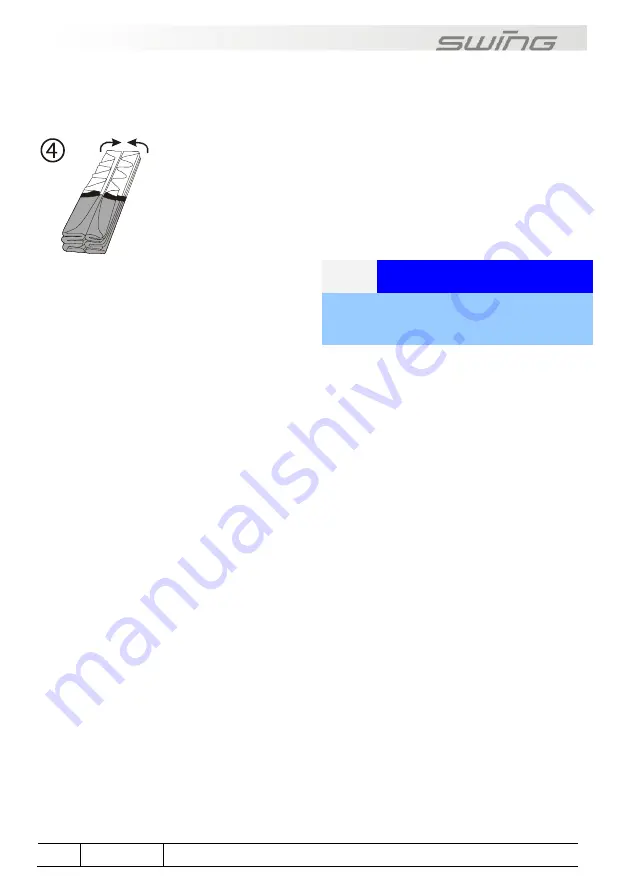
30
Section 08
Storing and looking after the paraglider
Vary slightly the final step of packing up
so that it is
not always the middle cell which is bent. Use the
neighbouring cells as well from time to time to
increase the life of the fabric, particularly in the middle
part.
When you are completing the final part of packing, we
recommend that you put the internal protection bag
under the glider to minimise abrasion on the ground.
Fig. 9
Steps 1 - 4 show the correct and
careful way in which to fold up the TWIN
RS
Storing and transporting the glider
Even if your paraglider was completely dry when
it was packed up after the final flight of the
season, for long-term storage you should if
possible take it out of the back pack and spread
out the canopy a little in a clean, dry place away
from direct light. If you do not have the space to
do this, then open the backpack, internal bag
and belt as much as possible and avoid
compressing it. It must be stored at a
temperature between 10° and 25° C and in
relative humidity between 50 and 75%. Make
sure too that the paraglider is not stored in a
place where animals such as mice or cats could
use it as a place to sleep.
Do not store the paraglider near any chemicals.
Petrol, for example, causes the material to
disintegrate and can cause considerable
damage to your paraglider. When your
equipment is in the car boot, keep it as far away
as possible from any spare petrol cans or oil
containers.
The TWIN RS 2 should not be exposed to
extreme heat (e.g. in the boot of the car during
summer). The heat may cause any moisture
present to be pressed through the fabric,
thereby
damaging
the
coating.
High
temperatures accelerate the process of
hydrolysis, particularly when combined with
moisture, which damages fibres and coating. Do
not store your paraglider near radiators or
other heat sources.
Always transport your glider in the special inner
bag and use the backpack provided for the rest
of the equipment.
Looking after the paraglider
The life of any paraglider depends to a large
extent on how you treat it.
Follow the care instructions and handle it
carefully to ensure that you have many years of
enjoyment from your TWIN RS 2.
PLEASE NOTE
Do not drag your glider across rough
surfaces such as stones or asphalt, as this
could damage the seams or surface coating.
Fabric
SWING uses a specially developed polyamide
fabric for the TWIN RS 2 which has a high-
quality coating for improved UV resistance,
colour fastness and air permeability. This fabric
undergoes rigorous laboratory tests and was
tested for several months under extreme
conditions and heavy use in flight.
Care is essential to ensure that the fabric and
glider remain durable and retain their qualities.
The glider should therefore be protected from
unnecessary UV light. Do not unpack your glider
until immediately before flight and pack it up
straight after landing. Modern paraglider
fabrics have better protection against the sun,
but UV rays in particular are still one of the
decisive factors in how the fabric ages. The
colours will fade first and then the coating and
fibres will begin to age.
When the TWIN RS 2 is manufactured, the side
of the fabric with the coating is kept to the
inside. This provides relatively good protection
from damage for the coating which is of key
importance to the fabric’s features. When
choosing a place to launch, try to find
somewhere which is smooth and free of stones
and sharp objects.
Do not stand on the glider. This weakens the
fabric, especially if it is on a hard or stony
surface. Pay attention to the behaviour of
spectators at the launch site, especially







































